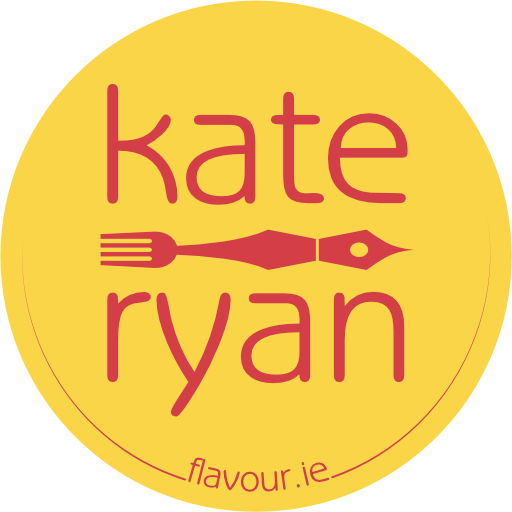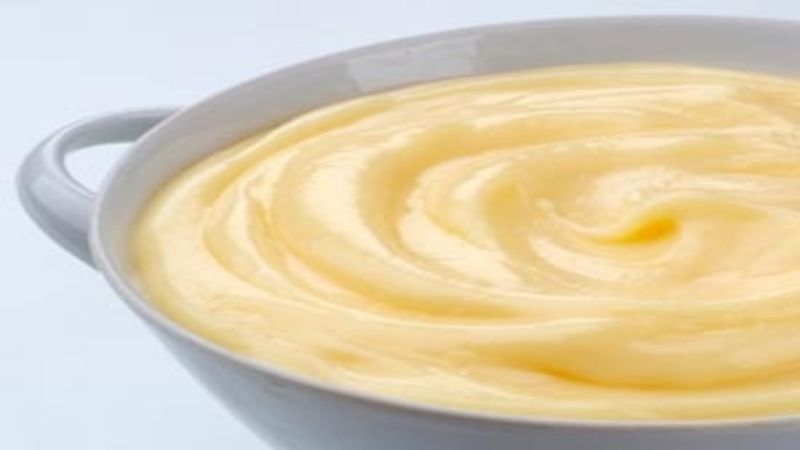There are few things that set my heart racing as much as custard. Yes, I am sure that the heightened velocity of my heart rate isn’t a sign of increasing levels of cholesterol, thank you very much. No, rather there is no other edible item I choose to indulge in that gives rise to feelings of comfort, nostalgia and luxury in equal measure and concurrence as the viscous mixture of eggs, cream and sugar. I don’t think that this magic concoction is given half as much praise as it should.
Granted, my first encounters with custard were less than inspiring. I all too clearly remember the brown, yellow and pink varieties served up with dessert at school meals vaguely tasting of chocolate, banana and “mysterious pink” respectively, covered with a thick skin and served at temperatures only previously experienced inside an erupting volcano. At home, I long believed that custard was made from powder added to hot milk, fluorescent yellow in colour. If you fancied yourself going up in the world, you had it ready made. If you were properly posh, you forked out for Ambrosia.
That was the extent of my childhood experiences with custard, until one glorious day when I tasted my first ever Custard Slice. Thick set crème patisserie between two slices of flaky puffed pastry and topped with soft royal icing that glued your fingers as it was held and devoured. Such bliss.
I remember the first time I ever ate a mini egg custard tart, complete with nutmeg grated on top. In my teenage years, I used to work a Saturday job at the restaurant inside Littlewoods Department Store in Bristol. One of my duties, which I cherished, was plating the desserts. Any cakes that were not bought by the end of service would be given to the staff to eat else they were binned. Secretly, I used to always plate up a few extra custard tart slices so I’d stand a pretty good chance of bagging myself a slice at the end of my shift. I literally would not be able to stop thinking about it all day long.
Fast forward to 2014 when I first tasted something that looked suspiciously like a custard tart encased in buttery puff pastry but called “Pastéis de Nata” in Lettercollum Kitchen Project, Clonakilty. They were warm, having only just come out of the oven. That first bite was the equivalent of all my Christmasses, Birthday’s, Summer Holidays and a huge lottery jackpot all arriving at the same time. Where did these come from? What spells were cast to make such delicious morsels? Turns out, Pastéis de Nata are the national dish of Portugal (OK, slight exaggeration, but if I were Queen of Portugal I would totally make that happen). Still, ever since I have been trying to engineer a situation where I would happily find myself in Portugal, but it didn’t happen until 2016….
In February last year, I took a quick five-day break in Portugal. I had (at least) four mini Pastéis de Nata for my breakfast, every single day! Sometimes, gluttony is such a good thing. That said, I might wait a bit before I get the old cholesterol tested – know what I mean?
I am more than happy to admit my obsession with this dreamy sweet yellow liquid. If were so allowed to choose my last meal, it would be a 15 course extravaganza of custard in different forms. So allow me to enlighten you with a summary of what I have learned about one true love (don’t tell Mr Flavour will you?) in my “Miscellany of Custard”…
The One, True Custard:
Colour depends on the eggs used, but should be bright yellow, thick yet pourable. Probably the best thing ever invented by the English. Probably.
Crème Anglaise:
Pale yellow, thinner and runnier than the English version. French origin, sweeter and often flavoured with vanilla.
Baked Custard:
A traditional thick custard, baked in the oven to set. Includes: traditional Egg Custard Tarts (UK); Pastéis de Nata (Portugal, Spain and Greece all have variations); Crème Bruleé and Crème Caramel (France) also Flan (Spain, Portugal, Mexico).
Crème Patisserie:
A thickened, fresh custard that isn’t baked but can hold its shape because of the introduction of flour or other starch and is used most frequently with cakes and other patisserie. Used in custard slices, doughnuts, choux buns, éclairs etc.
There are many other variations across the world, from steamed custard in Asia to Zabaione in Italy and of course not forgetting savoury custards used in quiches, although I prefer to stick to the sweet versions, please and thank you!
So there you have it. As the saying goes, when life gives you eggs – make custard.
OK I may have made that up, but with Easter just around the corner it is a perfect time to indulge in a spot of custard making with beautiful local, free range eggs. Experiment with flavouring your custard with citrus fruits; seasonal rhubarb; spices and flavoured sugar syrups. It’s a lot more interesting than eating chocolate eggs or hunting for brightly painted empty ones in the garden that’s for sure!

